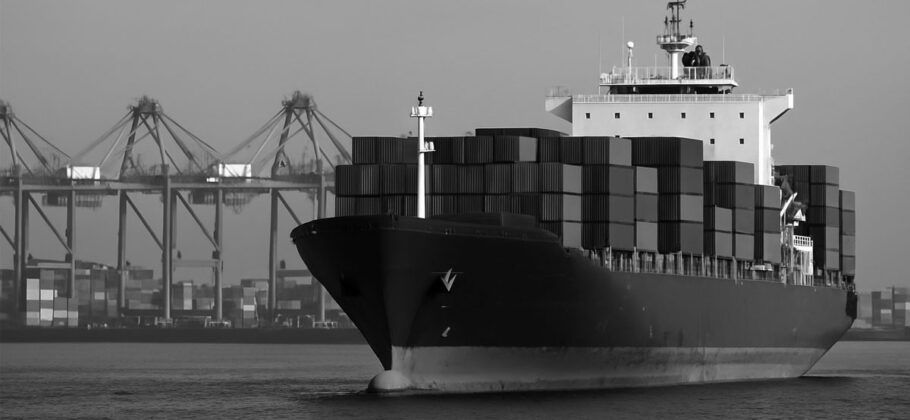A Sudden Silence on the Sea
West Coast port officials were stunned Friday morning by an event they have not seen since the height of the COVID-19 pandemic. Not a single cargo ship had departed China for the major ports of Los Angeles and Long Beach in over 12 hours. Just six days earlier, there had been 41 ships scheduled to leave China for California. But now, the shipping lanes are quiet.
“That’s cause for alarm,” said Mario Cordero, CEO of the Port of Long Beach. “We are now seeing numbers in excess of what we witnessed in the pandemic” in terms of vessel cancellations and declining arrivals. These ports, which normally buzz with activity and receive the largest volume of U.S. imports, are experiencing an unprecedented drop in cargo.
The Port of Long Beach has seen its cargo volume fall by 35 to 40 percent compared to typical levels. The Port of Los Angeles is reporting a 31 percent drop in volume just this week. Even the Port of Seattle had no container ships in port, a situation that port officials say has not happened since early 2020.
The Role of New Tariffs
This shipping freeze comes in the wake of sweeping tariffs imposed by President Donald Trump last month. Most Chinese goods now entering the United States face a 145 percent tariff. That decision has made it significantly more expensive for U.S. companies to import products from China, leading many to cancel shipments.
“This is the steepest drop in shipping traffic we’ve seen since global lockdowns,” said Ryan Calkins, a commissioner at the Port of Seattle. “Just nothing is being shipped over.”
For businesses and consumers, this change will be felt almost immediately. Gene Seroka, executive director of the Port of Los Angeles, warned that “starting next week is when we begin to see the arrivals off of that [tariff] announcement on April 2.” He said cargo coming into Los Angeles is expected to fall by 35 percent compared to the same time last year.
The National Retail Federation estimates that overall U.S. imports will fall by at least 20 percent during the second half of 2025. For Chinese imports specifically, JPMorgan projects a drop between 75 and 80 percent. These figures represent the largest collapse in trade between the two countries in decades.
“If not easily replaced by imports from other countries, a collapse of this magnitude would not only sharply boost prices but also significantly disrupt supply chains,” JPMorgan analysts wrote in their recent report.
Rising Costs and Fewer Choices
The consequences for consumers are already beginning to show. Items shipped before the April 9 tariff deadline are still arriving, but any new inventory is subject to the much higher tariff rate. That means the products hitting store shelves in the next few weeks will cost more, and there may be fewer options available.
“Many major retailers have told us they have about a six- to eight-week supply of inventory in their systems now,” Seroka said. “United States manufacturers and consumers alike will find difficult decisions in the weeks and months to come if policies don’t change.”
Jonathan Gold of the National Retail Federation emphasized that large retailers might have the ability to stockpile inventory, but smaller businesses do not. “Especially for small retailers who don’t have the ability to absorb any of the tariff impact, they’re trying to figure out what their next steps are,” he said.
According to a recent survey by Gartner, 45 percent of supply chain leaders say they will pass the added costs on to customers. That will result in higher prices across the board, particularly for common goods like clothing, electronics, footwear, and children’s products.
“You may still find pants at the store,” Seroka said, “but not the specific kind you want. And the ones you do find will likely be priced up.”
Global Shipping Repositions
As trade with China slows, shipping companies have begun to reroute vessels or leave them idle. At the Port of Shanghai, some of the world’s largest cargo ships are sitting still. Companies are opting to cancel sailings rather than operate half-empty ships.
“The companies that operate the ships, they canceled a lot of sailings,” explained Ryan Petersen, CEO of the shipping logistics firm Flexport. “They said, ‘We’re not going to sail this ship half full. We’re going to leave it here.’”
Flexport reported that sailings from China to the United States fell by 60 percent in April. That kind of drop has not been seen in decades, and it suggests a long-term realignment of supply chains.
Imports are now shifting toward other Asian nations, including Vietnam and Malaysia, but those regions cannot match China’s production volume. “It takes time, months if not years, to establish these new relationships,” said Gold. “You have to make sure the suppliers have the right infrastructure and trained workforce, and can meet U.S. safety standards. It’s not something that can happen overnight.”
Port Workers and Truckers Brace for Slowdowns
The effects are also being felt by American workers. Seroka noted that reduced cargo traffic means fewer hours and lower pay for workers across the supply chain. “A trucker who’s hauling four or five containers today likely will be hauling two or three after next week,” he said. “Dock workers who have been getting overtime and double shifts are likely to be working fewer hours.”
Chris Spear, president of the American Trucking Associations, warned that the longer the tariffs remain in place, the more pressure truckers will face. “Not only will tariffs reduce cross-border freight, but they will also increase operational costs,” he said. “The price tag of a new truck could rise by up to $35,000, amounting to a $2 billion annual tax and putting new equipment out of reach for small carriers.”
High-Stakes Negotiations in Geneva
Trade officials from both the United States and China met in Geneva over the weekend to negotiate a solution. The talks lasted more than 10 hours. President Trump posted on Truth Social that “great progress” was made and described the outcome as a “total reset negotiated in a friendly, but constructive, manner.”
While no formal agreement has been reached, Trump suggested the tariff rate could be reduced to 80 percent. He said the final decision would be made by Treasury Secretary Scott Bessent, who is leading the U.S. negotiating team.
“We want to see, for the good of both China and the U.S., an opening up of China to American business,” Trump wrote.
Bessent warned that the tariffs could cost China up to 10 million jobs if they remain in place. “Even if there is a drop in the tariffs, they could lose 5 million jobs,” he told reporters. Trump has said repeatedly that the goal is to correct the U.S. trade deficit and bring manufacturing jobs back to American soil.
A Rewiring of Global Trade
According to the World Trade Organization, Chinese exports to the United States are expected to fall by 77 percent this year. Meanwhile, exports from China to other regions are increasing. Imports to South America are projected to rise by 9 percent, and the rest of North America is expected to see a 25 percent increase.
Peter Swartz of Altana said the global supply chain is being reshaped. “We see a rearrangement of global supply chains both for the U.S. and in general,” he said. “You might see more flow out of India or Southeast Asia as companies adjust.”
But for now, American ports, truckers, and retailers are navigating a painful transition. The once-busy Pacific lanes from China to California are nearly empty. The silence in the ports reflects a deep shift in the global economy, and no one knows yet when it will return to normal.





